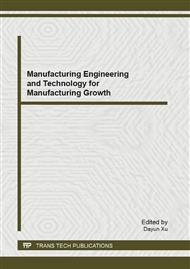p.433
p.440
p.445
p.451
p.461
p.469
p.476
p.482
p.486
A Study on the Development of Tool Planning for REF SILL OTR-R/L Auto-Body Panel by Using Forming Analysis
Abstract:
The characteristics of the sheet metal process include the loss of material during the process, short processing time and excellent price and strength. The sheet metal process with the above characteristics is commonly used in the industrial field, but in order to analyze irregular field problems, a reliable and economical analysis method are needed. The finite element method is a very effective method to simulate the forming processes with a good prediction of the deformation behaviour. Among the finite element method, the static-implicit finite element method is applied effectively in order to analyze the real-size auto-body panel stamping processes, which include the forming stage.
Info:
Periodical:
Pages:
461-468
Citation:
Online since:
December 2012
Authors:
Price:
Сopyright:
© 2013 Trans Tech Publications Ltd. All Rights Reserved
Share:
Citation:


